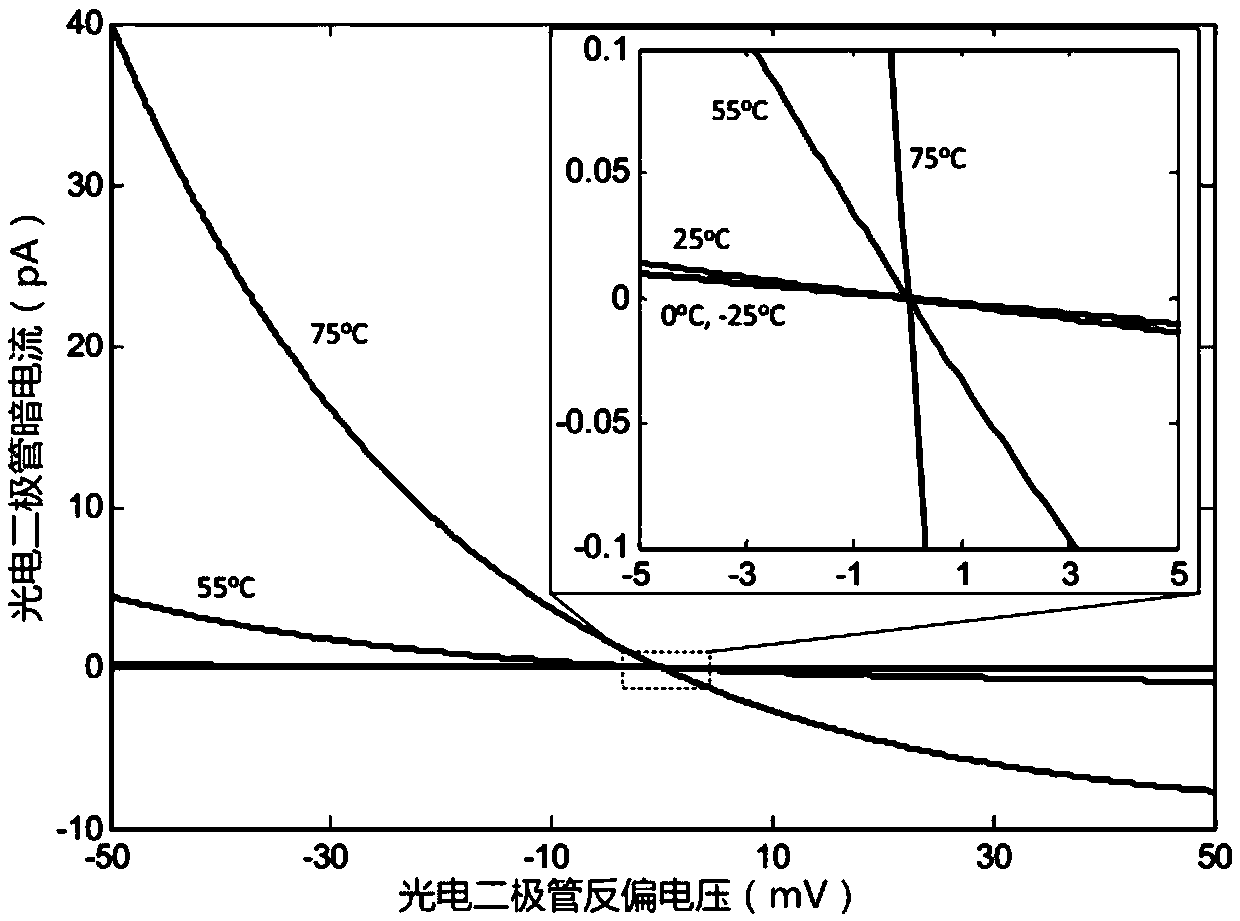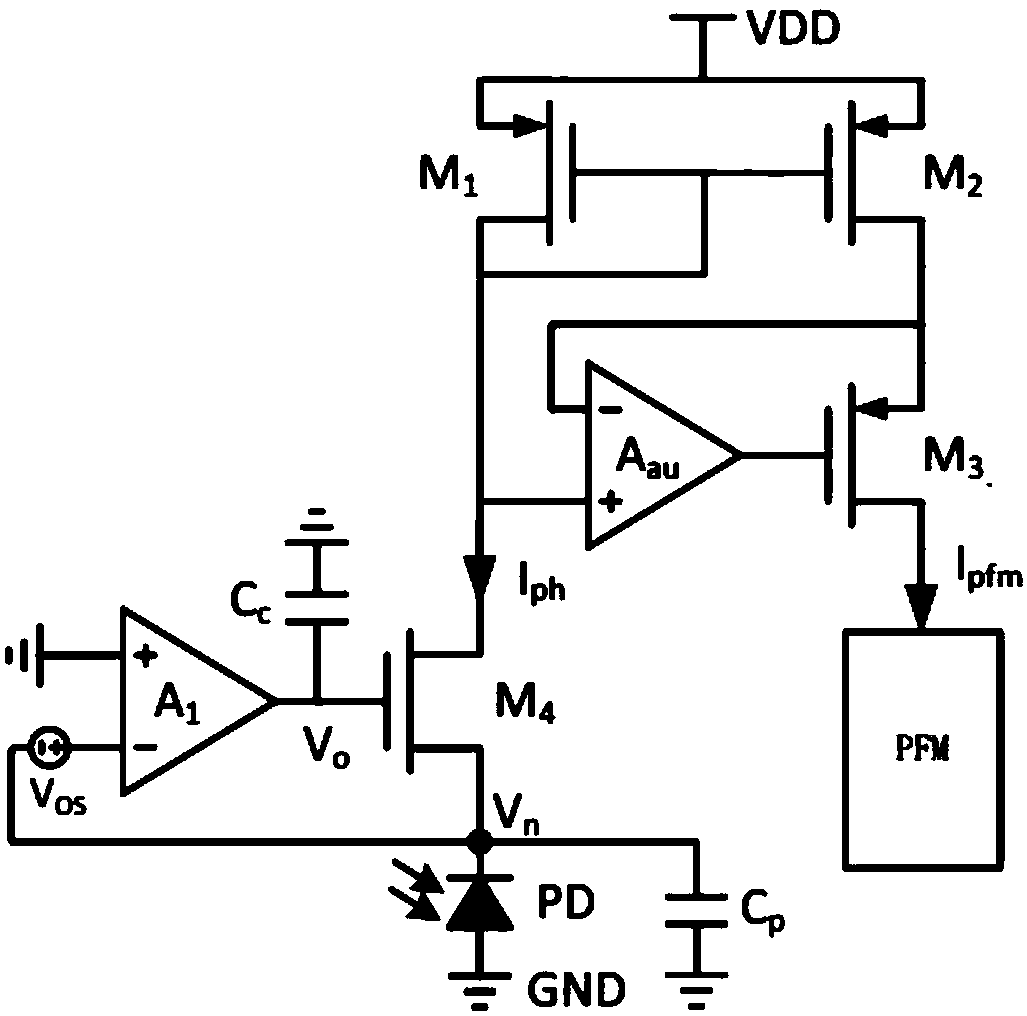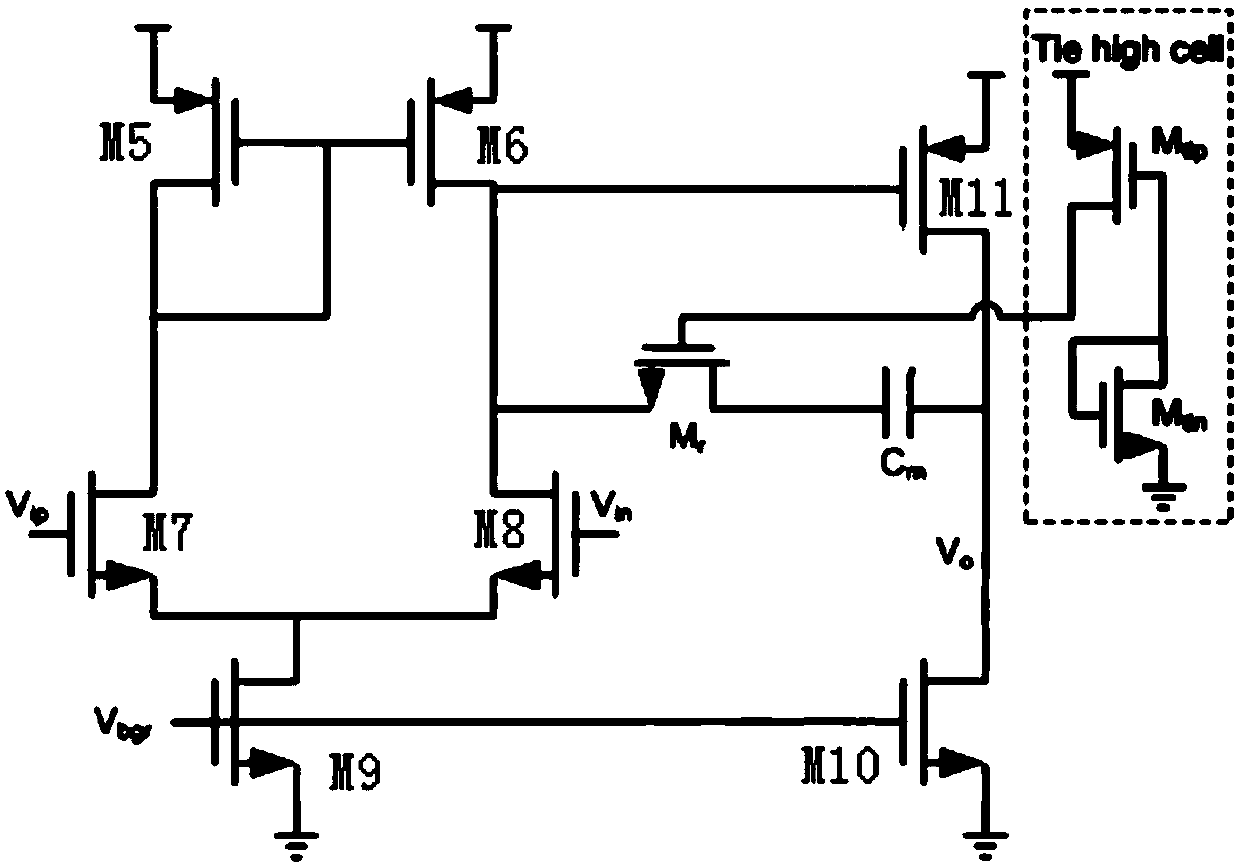High linear dynamic range photoelectric sensor for blood oxygen detection
A photoelectric sensor, dynamic range technology, used in sensors, applications, DC-coupled DC amplifiers, etc., can solve the problems of increasing the dark current of photodiodes, increasing chip area and cost, sacrificing linearity, etc., to save on-chip area and Production cost, performance improvement, effect of improving performance
- Summary
- Abstract
- Description
- Claims
- Application Information
AI Technical Summary
Problems solved by technology
Method used
Image
Examples
Embodiment Construction
[0020] The preferred embodiments of the present invention will be described in detail below with reference to the accompanying drawings.
[0021] Such as figure 1 It shows the change of the dark current of the photodiode in the N well of the P-type substrate with the change of the reverse bias voltage of the photodiode under the temperature range of -25 degrees to 75 degrees. It can be seen from the figure that when the reverse bias voltage is not 0 , the photodiode dark current will increase exponentially with temperature. But all I-V characteristic curves will intersect at the point where the reverse bias voltage is 0, that is to say, when the reverse bias voltage of the photodiode is 0, the dark current of the photodiode is very small and hardly changes with temperature. This provides the possibility to control the photodiode dark current to a minimum and not change with temperature. The photoelectric sensor structure of the present invention will also control the reverse...
PUM
 Login to View More
Login to View More Abstract
Description
Claims
Application Information
 Login to View More
Login to View More - R&D
- Intellectual Property
- Life Sciences
- Materials
- Tech Scout
- Unparalleled Data Quality
- Higher Quality Content
- 60% Fewer Hallucinations
Browse by: Latest US Patents, China's latest patents, Technical Efficacy Thesaurus, Application Domain, Technology Topic, Popular Technical Reports.
© 2025 PatSnap. All rights reserved.Legal|Privacy policy|Modern Slavery Act Transparency Statement|Sitemap|About US| Contact US: help@patsnap.com



